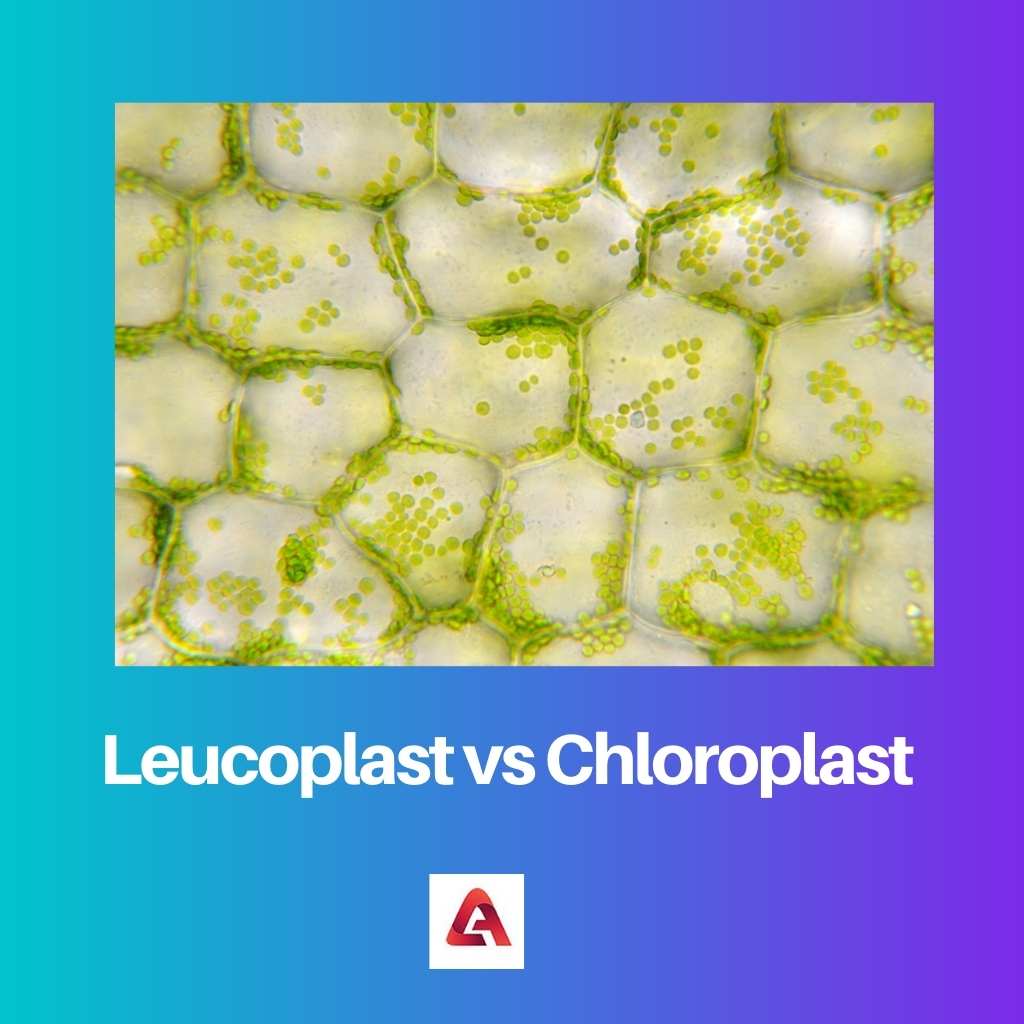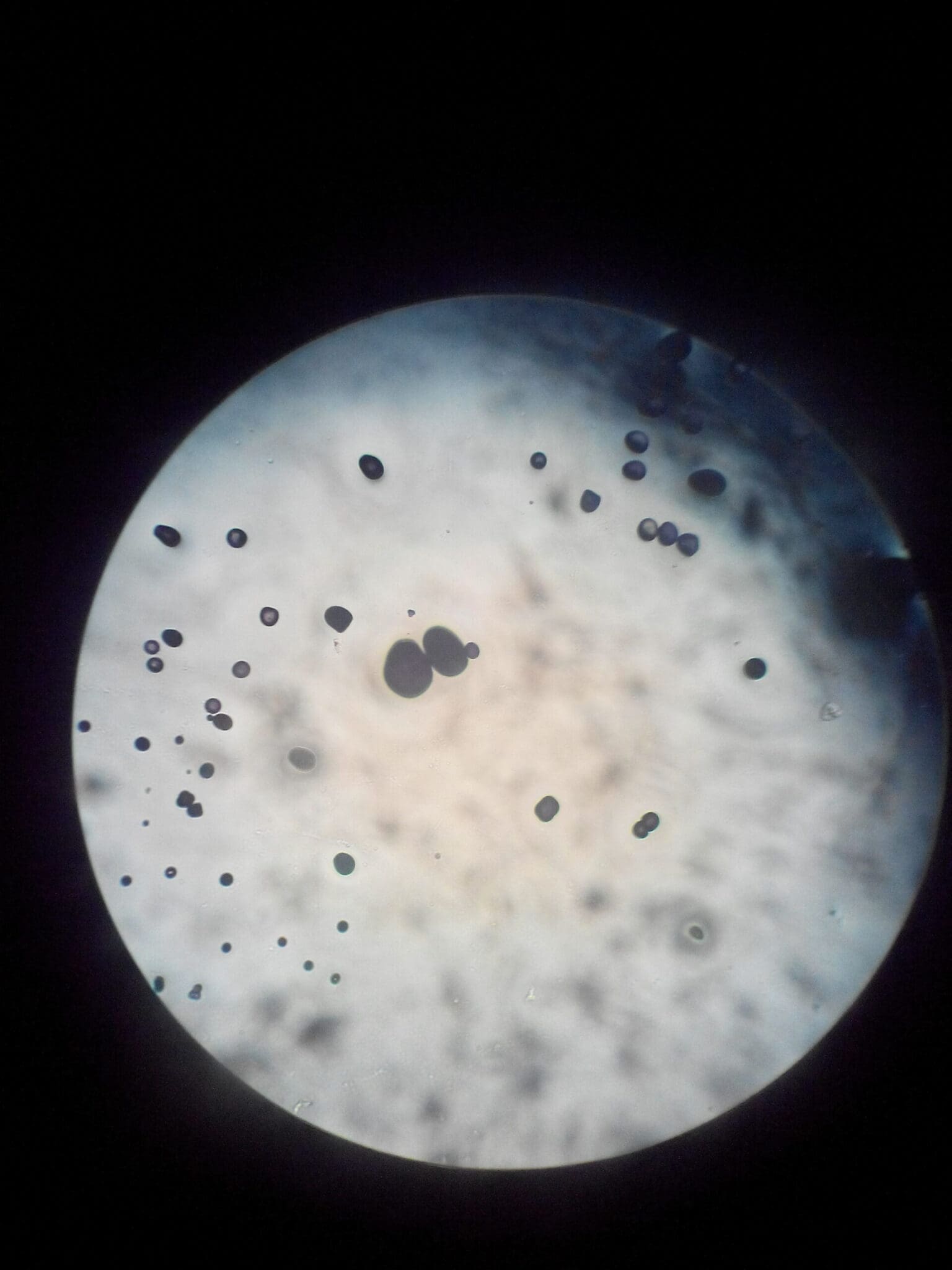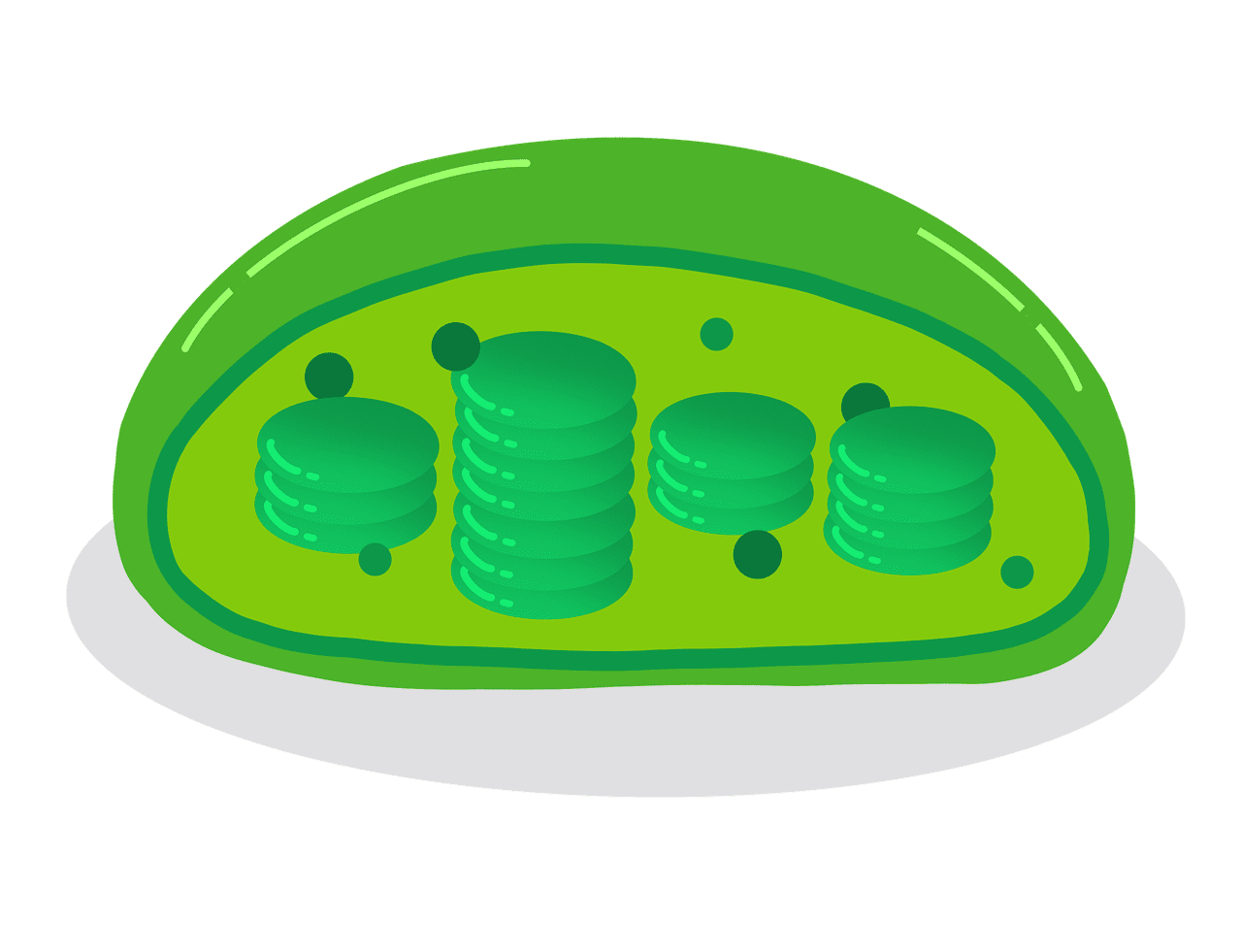Plants have two types of plastids: leucoplasts and chloroplasts. They serve a specific purpose in plants.
Moreover, in plants, leucoplasts are a form of plastid that stores nutrients such as starches, lipids, and proteins, whereas chloroplasts are responsible for photosynthesis.
Plastids in plants are divided into three categories. Plants have three types of cells: leucoplasts, chloroplasts, and chromoplasts.
Key Takeaways
- Leucoplasts are colorless plastids responsible for synthesizing and storing starches and lipids, while chloroplasts are green plastids involved in photosynthesis.
- Chloroplasts contain chlorophyll, which allows them to capture sunlight and convert it into chemical energy, while leucoplasts lack pigments.
- Both leucoplasts and chloroplasts are found in plant cells and play essential roles in plant metabolism and energy storage.
Leucoplast vs Chloroplast
Leucoplasts are a type of plastid that do not contain pigments and are not involved in photosynthesis. Instead, they are responsible for synthesizing and storing various substances. Chloroplasts are a type of plastid that contain the pigment chlorophyll and are responsible for photosynthesis. Chloroplasts are found in the green tissues of plants.

In-plant cells, the leucoplast is a tiny organelle. It’s a sort of plastic that’s designed to store carbohydrates, proteins, and lipids in plants. Leucoplasts have no color.
Consequently, they don’t attract or harm pollinators. They are likewise devoid of photosynthetic pigments. Also, some colors are not found in leucoplasts. Proteins, carbohydrates, and fat are all stored in the leucoplast, which is a form of plastid.
Chloroplast is a type of plastid that includes chlorophylls, which are photosynthetic chemicals. Chloroplasts are photosynthetic organelles in plants and are very important organelles.
They are the most common type of plastid found in plants. Chloroplasts use the energy of sunlight to produce carbohydrates. Chloroplasts are a form of plastids, which are round, oval, or disc-shaped entities involved in food synthesis and storage.
Comparison Table
| Parameters of Comparison | Leucoplast | Chloroplast |
|---|---|---|
| Definition | The leucoplast is a colorless organelle extracted from plant cells that stores starch or oil. | The chloroplast is a plastid present in plants plant cells that includes chlorophyll and is where photosynthesis occurs. |
| Pigments | Leucoplast does not. | Chloroplast contains pigments. |
| Color | Leucoplast is Colorless | Chloroplast is Green in color |
| Density of Stroma | Lesser denser | Denser |
| Functions | The leucoplast is in charge of storing nutrients such as starches, lipids, and proteins. | The chloroplast is in charge of photosynthesis. |
What is Leucoplast?
Leucoplast is a type of plastid that stores material in the plant cell. Leucoplasts are non-pigmented plastids, resembling chromoplasts and chloroplasts. That is, they lack colors such as chlorophyll and carotenoids and thus are colorless.
Leucoplasts are also found in non-photosynthetic and unexposed portions of plants, such as roots, bulbs, and seeds, due to the absence of these pigments.
Leucoplasts, on the other hand, have a storage role, accumulating starch, lipids, and proteins. Furthermore, starch is stored in amyloplasts, fat is stored in elaioplasts, and proteins are stored in proteinoplasts.
In addition, vascular plant chloroplasts generate tannin-filled pockets, changing the chloroplast into a tannosome, a type of leucoplast.
Later, when these areas break apart, a huge vacuole of tannins forms. In addition to their core storage role, some white matter bodies have important metabolic functions, such as fatty acid production.
Chloroplasts are plastids that are green in color and include thylakoids and the photosynthetic chemical chlorophyll.
Chloroplasts are important in glucose photosynthetic synthesis. Leucoplasts are smaller and have a more varied shape than chloroplasts.
Non-photosynthetic tissues, such as bases, shoots, and seeds, are where they are most commonly found. They’re mostly located in plant tissues that aren’t exposed to the outside.

What is Chloroplast?
Photosynthesis is carried out by the chloroplast, a green plastid found in plants. Chlorophyll is the most common form of photosynthetic pigment found in many plants and is responsible for the green hue.
Even during the light stage of photosynthesis, chlorophylls’ principal role is to gather energy from the sunlight and deposit it in ATP and NADPH molecules.
Even in the dark stages of photosynthesis, the energy molecules produced are used to make glucose by mixing carbon dioxide and water. In addition to photosynthesis, chloroplasts in plants can play additional roles, such as fatty acid biosynthesis, amino synthesis, and immune activity.
Inner and outer membranes are two membranes that cover the chloroplast. The stromal, or structure of the chloroplast, contains cylindrical cell bodies grana.
In the stroma of each chloroplast, there may be 10 to 100 grana. Photosynthesis takes place in disc-shaped meninges thylakoids, which are found in grana. Ribosomes, DNA, RNA, and soluble enzymes are all found in chloroplasts, which are required for photosynthesis. Symbiotic interaction between photosynthetic bacteria and higher plants is thought to be the source of chloroplasts.
The existence of two pigments, chlorophyll a and chlorophyll b, distinguishes chloroplasts from other types of plastids by their green color. One of the functions of this pigment is to harvest light energy for the photosynthetic process.
Other pigments, such as carotenoids, are present in chloroplasts as pigment molecules that capture solar energy and transfer it to chlorophyll.

Main Differences Between Leucoplast and Chloroplast
- The leucoplast is a colorless organelle found in plant cells that contains starch or oil, whereas the chloroplast is a plastid found in plant cells that contains chlorophyll and is where photosynthesis takes place.
- Chloroplast, on the other hand, includes colors like chlorophyll and carotenoids, but leucoplast lacks them.
- Chloroplast is green in hue, while leucoplast is colorless.
- The leucoplast’s stroma is less thick, whereas the chloroplast’s stroma is thicker.
- The leucoplast is responsible for storing resources, including carbohydrates, lipids, and proteins, whereas the chloroplast is responsible for photosynthesis.
- https://academic.oup.com/plphys/article-abstract/120/3/879/6081121
- https://link.springer.com/article/10.1007/BF00385557
